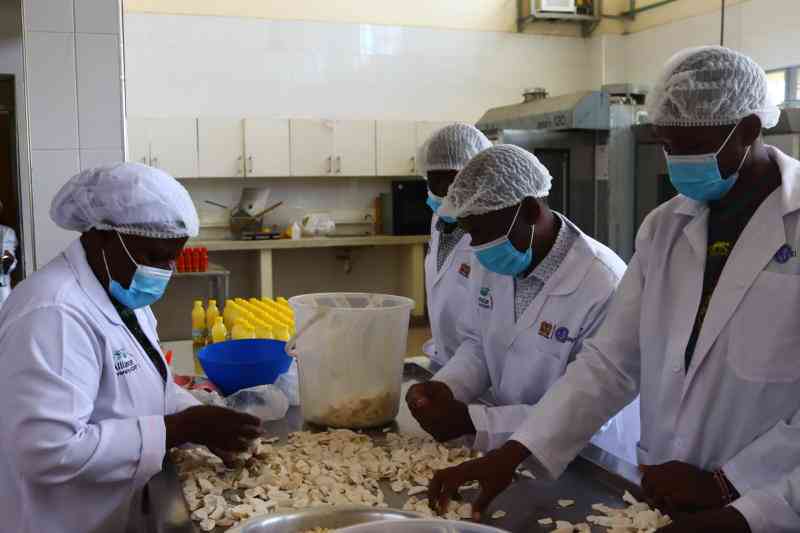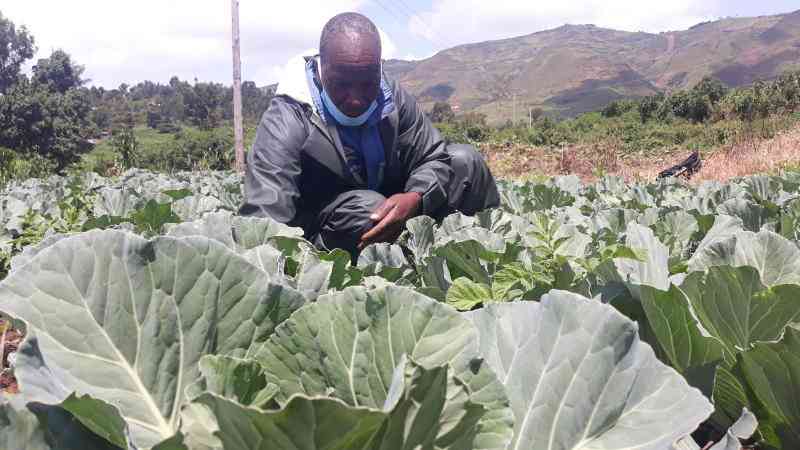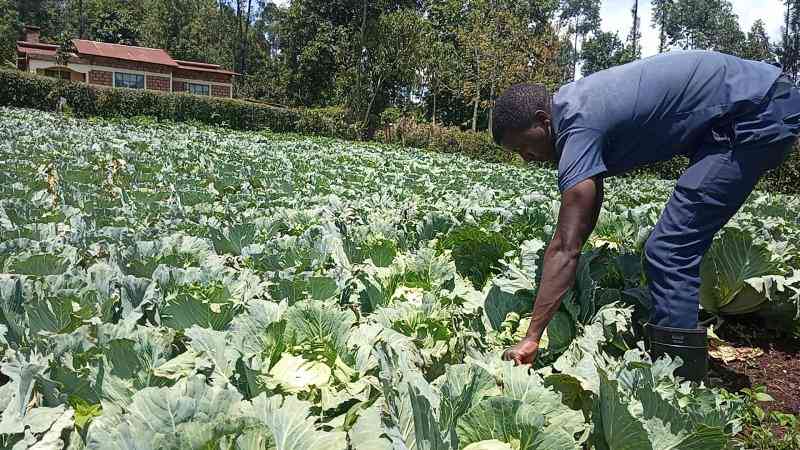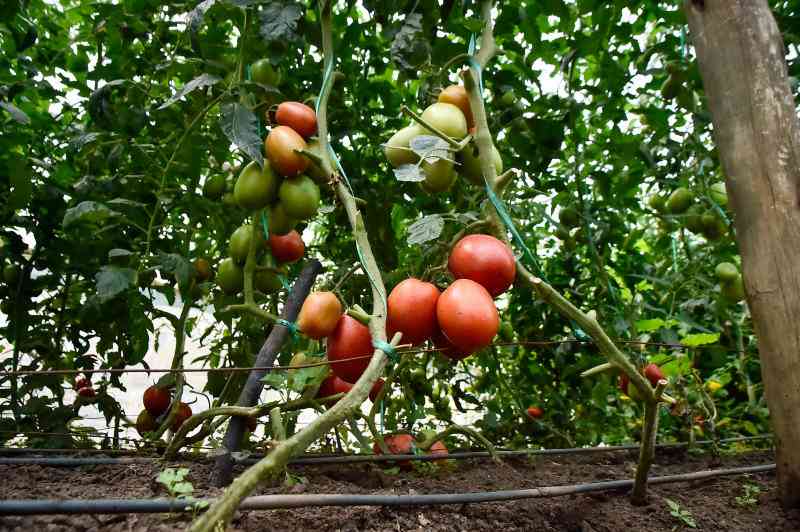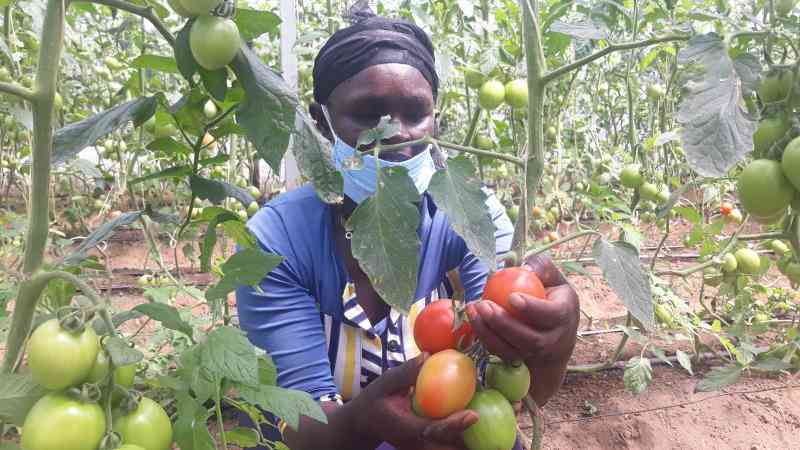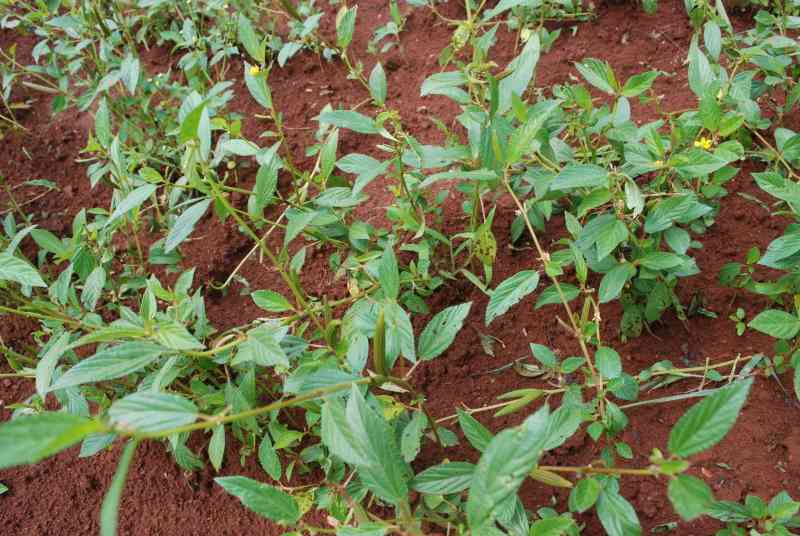
A garden of Jute Mallow (Mrenda) at Maseno university. [Denish Ochieng, Standard]
Jute mallow, also known as “mrenda,” is a highly nutritious leafy green vegetable that is particularly popular among the people of western Kenya.
According to Healthline.com, jute mallow leaves are rich in vitamins A, C, and E, as well as minerals such as calcium, iron, and potassium. They are also an excellent source of dietary fiber and contain antioxidants that may promote health and prevent certain diseases.
Bertha Atieno specialises in farming traditional vegetables. Alongside mrenda, she cultivates other nutritious options like Amaranth, Cowpea (kunde), and African Nightshade (osuga) on her small farm in Siaya County. There has been a noticeable change in attitude towards the consumption of traditional vegetables as people strive to eat healthier foods,” she notes, providing guidance on farming jute mallow.
Climate and Soil Requirements
Jute mallow is relatively easy to grow and can thrive in various soil types, although it prefers well-drained, fertile soil with a pH level ranging from 5.5 to 7.5.
Site Selection
Select a sunny location for planting jute mallow, as it requires ample sunlight for growth. Avoid waterlogged areas to prevent root rot due to excess moisture.
Propagation
Jute mallow can be propagated from seeds or stem cuttings. Atieno mentions that most farmers prefer seed propagation.
If using seeds, sow them directly into prepared soil, spacing them about 10 to 15 cm (4 to 6 inches) apart.
For stem cuttings, choose healthy stems about 15 to 20 cm (6 to 8 inches) long with several leaves and plant them in the soil at a depth of about 5 cm (2 inches).
Watering
Maintain consistently moist soil, especially during germination and early growth stages. Once established, jute mallow is somewhat drought-tolerant but still requires regular watering, particularly during dry spells.
Fertilisation
Apply a balanced fertilizer before planting and periodically side-dress with nitrogen-rich fertilizer throughout the growing season to encourage healthy foliage growth.
Weeding and Mulching
Keep the planting area weed-free to prevent competition for nutrients and water. Mulching around the plants helps suppress weeds, retain soil moisture, and regulate soil temperature.
Pruning and Thinning:
Regularly prune jute mallow plants to promote bushier growth and harvest tender leaves. Thin out overcrowded plants to enhance air circulation and light penetration.
Pest and Disease Management
Monitor plants regularly for signs of pests such as aphids, caterpillars, and mites. Handpick pests or use organic insecticidal soap if necessary. Implement crop rotation to minimise soil-borne diseases.
Harvesting
Harvest jute mallow leaves when young and tender, typically about four to six weeks after planting. Use a sharp knife or scissors to cut the leaves from the plant, leaving some behind for continued growth. Alternatively, gently uproot the whole plant from the soil.
Market
Atieno sells her produce in local markets and restaurants, offering a bunch for Sh30.
 The Standard Group Plc is a multi-media organization with investments in media platforms spanning newspaper print
operations, television, radio broadcasting, digital and online services. The Standard Group is recognized as a
leading multi-media house in Kenya with a key influence in matters of national and international interest.
The Standard Group Plc is a multi-media organization with investments in media platforms spanning newspaper print
operations, television, radio broadcasting, digital and online services. The Standard Group is recognized as a
leading multi-media house in Kenya with a key influence in matters of national and international interest.




